Recently I stopped in Fort Reno just west of Oklahoma City. Fort Reno has a long history. It was initially built in 1875 for the US Cavalry to monitor the Southern Cheyenne and Southern Arapahoe Indians in the area. As time went on and the Indian Wars subsided the post was converted to an Army Remount Facility operated by the Army Quartermaster Corps with the purpose of breeding, raising, and training horses and mules for the military. It held that function until 1947 along with a brief interlude as a prisoner of war facility during World War II. The property is now administered by the US Department of Agriculture as an Agricultural Research Station.
I love the many old buildings. Many of which are restored. Above is an old Officer’s Quarters. It looks in good shape on the outside. I wonder what life was like back in day living out in the middle of nowhere.
One of the original mule barns that it is being restored.
I love the cemetery located a quarter mile or so from the rest of the post. Lots of old graves here, many marked, “unknown” , a few soldiers who died during the Indian wars and lots of employees and family from the Remount Station days.
In a walled off section of the cemetery are graves of German and Italian soldiers who were prisoners of war during World War II. They didn’t all die here. Oklahoma had several POW camps and after the war the men who died were all disinterred and brought to Fort Reno.
The Italian soldiers were all buried together and somebody keeps their graves decorated. A few of the men have been disinterred by the families and the remains returned to Italy.
This is the most famous POW buried at Fort Reno. Johannes Kunze was a member of Rommel’s Afrika Corps and was taken prisoner in north Africa and sent to Oklahoma. He turned into an informant for the Americans and was found out and brutally murdered by his fellow prisoners. The Americans picked out five prisoners and charged them with murder. They stood trial, defended by an Army picked civilian attorney who had never practiced criminal law. The Army prosecutor was Leon Jaworski who later found fame as the Special Prosecutor during the Watergate scandals. Of course the five Germans were found guilty and were hung by the Army at Fort Leavenworth in Kansas right after the war ended. I posted about this last year. I just love stuff like this.
Speaking of Prisoners of War. The Germans built this chapel at the Fort during WWII. You can rent it for a wedding or other occasion. I think that would be cool.Check on how to do it here.

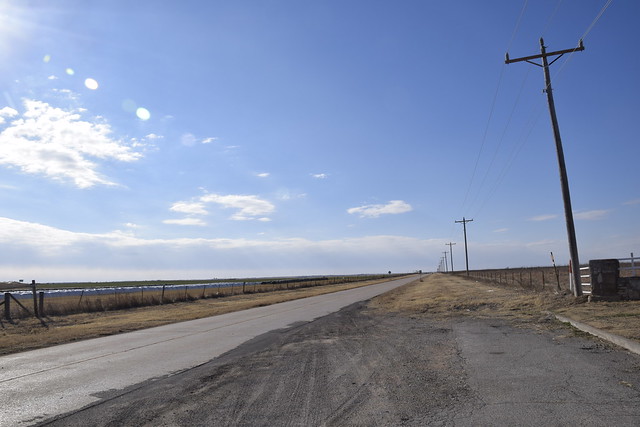
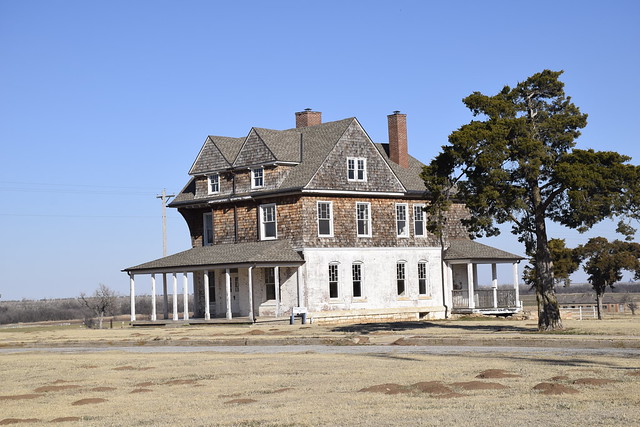
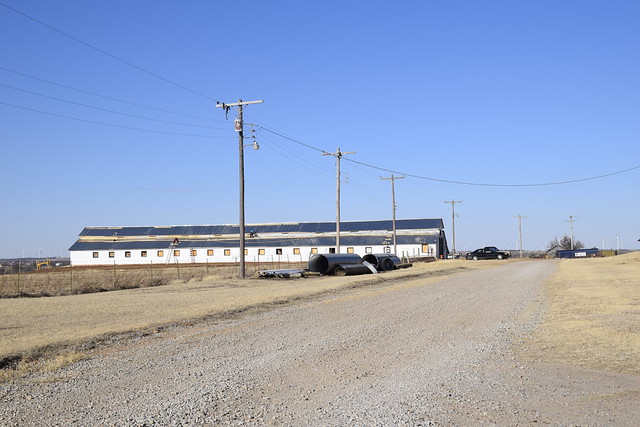
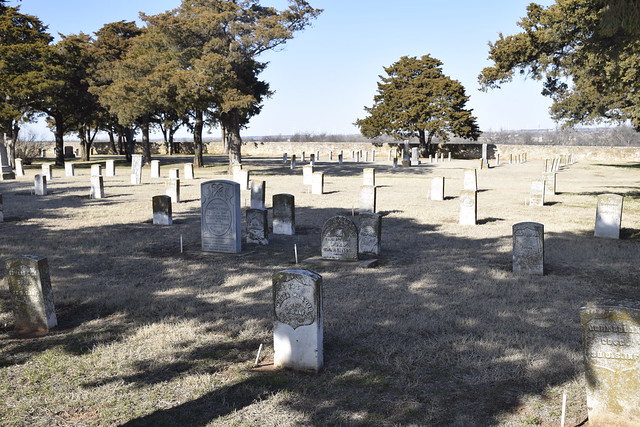
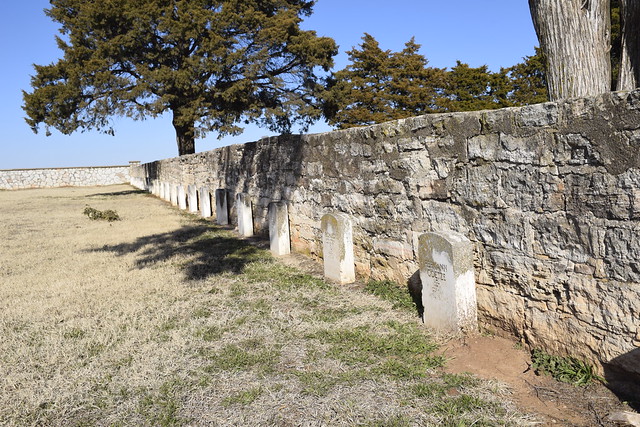
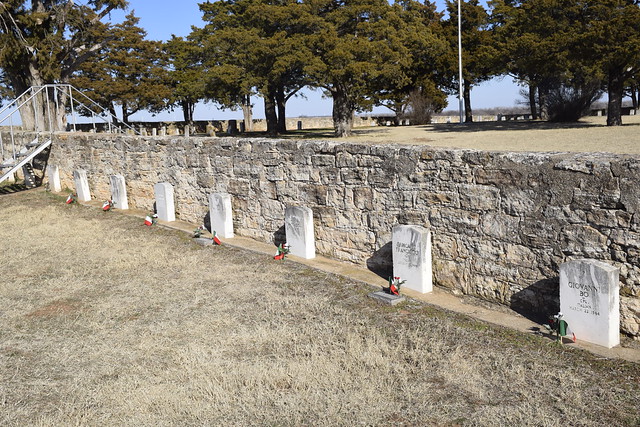
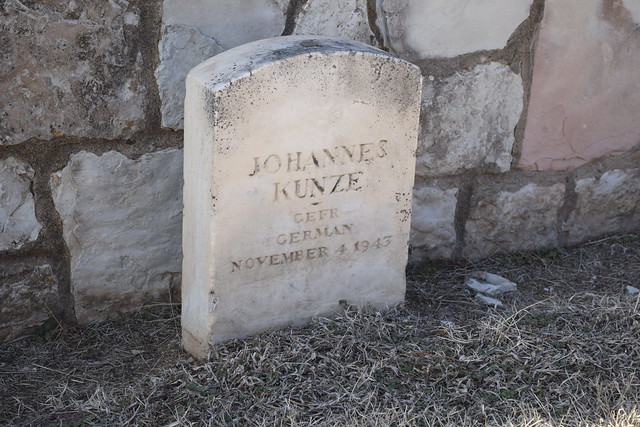
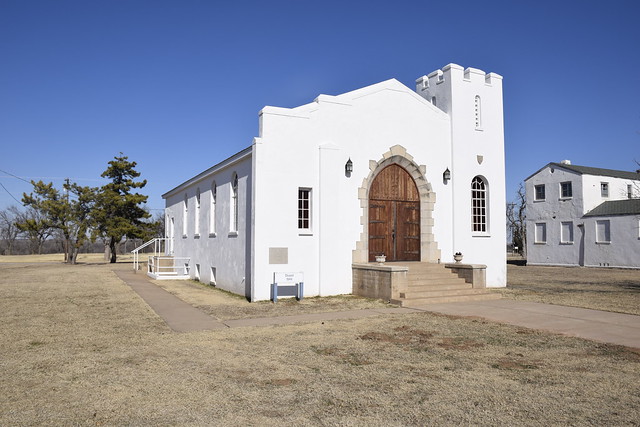
Those restored places are such painless ways to learn history. (So is reading your posts — I had no idea about this place.)
Beautiful place and pics.
Thanks for sharing.
Visiting places like this brings history alive. I love the old buildings and stories.
I’m still chuckling at your comment about reposting cat videos. I hadn’t heard of Fort Reno, thanks for the pictures and info. I also enjoy cemeteries, so much more peaceful than Twitter. The officers quarters looks as if it has many tales to tell.
Now that’s some flat country. Love the old house and tombstones.
I really enjoyed this and happy you took us along with you! Places like this fort is so much a part of American history, and the fact you shared it with us is much appreciated. Thanks for the trip…and the photos!!
Once you get west of Oklahoma you are definitely on the Great American Prairie. Talk about wide open spaces. A road trip to all of the early forts in the state would be quite educational. Thanks for sharing these images Yogi.
Wonderful historical post with lovely photos with a gorgeous blue ~ thanks,
Wishing you a Happy and Peaceful week ~ ^_^
Very interesting spot. So many treasures off the beaten path.
Good to hear those buildings have been restored.